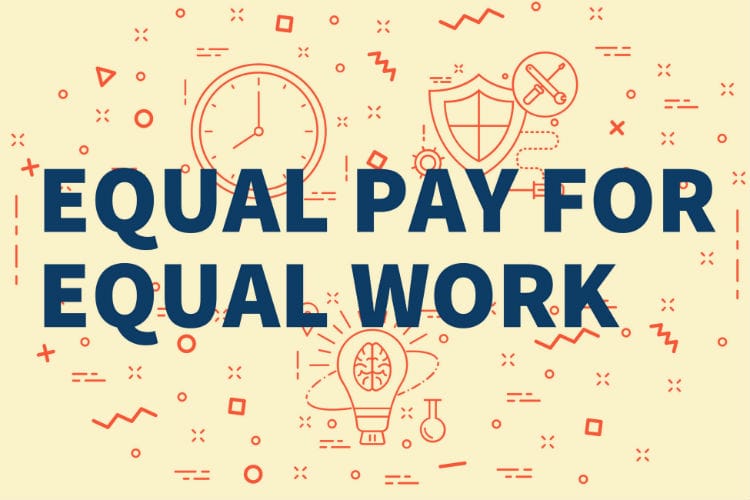Summary
- California has strict pay transparency laws that require employers to include pay ranges in job postings. Current employees also have the right to request pay scale information at any time.
- While these laws promote fairness and build trust, they can also create challenges, particularly with recordkeeping and other administrative tasks.
- HR and payroll software can simplify compliance and help businesses stay organized.
Pay transparency is a strategy to attract talent and retain current staff. In California, pay transparency is backed by a series of regulations, one of the most recent being Senate Bill 1162.
With the bill’s enactment, employers in California must be upfront about pay scales and clearly communicate them to candidates and current employees. While the bill intends to promote transparency, retention, and engagement, putting it into practice isn’t always straightforward, especially for employers who handle various job positions, locations, and levels of expertise.
So, what does the bill require, and how can hourly workforces implement these rules? Let’s take a closer look.
What is California Senate Bill 1162?
California SB 1162 is legislation that aims to promote transparency in pay scale disclosure. It requires employers to reveal pay ranges in job postings, submit pay data reports, and take steps to uphold pay transparency in the state. It went into effect on January 1, 2023.
Essentially, this bill encompasses transparency with job listings, current employees’ right to know, and recordkeeping and applies to California employers with 15 or more employees. Here are some fundamental points that the bill entails:
- Employers must disclose the pay range for a position in any job listing. If you employ a third-party recruitment agency, they should also include pay information in their job descriptions and job posts.
- Should current employees request it, employers must provide the pay scale of their position.
- Employers must keep records of each employee’s job title and wage history for the duration of the employee’s employment and three years after the end of employment. This information must always be ready for inspection by the Labor Commissioner’s Office.
- If an employee files a complaint and pay records are not available, it could be a point against the employer in court.
- Failure to comply can result in investigations by the Labor Commissioner. If violations are proven, penalties can be imposed.
- If someone is “harmed” based on this legislation, meaning they didn’t get any pay information as stated in the law, they can sue the company or seek legal remedies by taking them to court.
SB 1162 basically makes pay information more transparent and accessible, helps employees understand how much they can earn, and ensures that companies have the pay records and information to justify their pay decisions.
Other California Laws on Pay Transparency
California is known for having some of the most comprehensive employment laws, such as overtime pay and cell phone usage laws. The state takes the same thorough approach to pay transparency and disclosure requirements. Aside from SB 1162, here are other relevant state laws.
Pay Data Reporting
Under Senate Bill 973, private employers with 100 or more employees must submit an annual report on pay data to the California Civil Rights Department. SB 1162 expanded this and included rules on pay scale transparency and record keeping. The annual pay data report must cover pay information by race, ethnicity, and gender with specific job categories and is due every second Wednesday of May.
Salary History Ban
Aside from pay transparency and reporting, California Assembly Bill 168 also prohibits employers from asking about an applicant’s salary history or using their past pay information to make a salary offer. Employers, however, can ask applicants for their expected salary.
Wage Theft Protection Act
This act requires employers to provide a notice that contains specific information once they hire an employee. It should include:
- Rate or rates of pay and if it’s paid by the hour, shift, day, week, salary, piece, or commission.
- Overtime rate
- Applicable allowances that count toward minimum wage, such as for meals or lodging
- Regular payday
- Employer details such as name and other names they do business under, physical and mailing address, telephone number
- Contact details of employer’s worker’s compensation insurance carrier
- Any other necessary information deemed by the Labor Commissioner
Should the said notice change, employees must be notified in writing within seven calendar days unless the changes are reflected on the next pay stub or another legal notice with the updated details is issued within seven days.
Whistleblower Protection and Anti-Retaliation Law
California offers another layer of protection for employees who report disparities in pay information. Under this law, an employer cannot retaliate against an employee who discloses information to law enforcement, an investigative body, or someone with authority to address the issue about a law violation, a regulation not being followed, or unsafe working conditions.
Employees are also protected if they refuse to participate in activities they believe would break the law. Even if an employee hasn’t reported anything but the employer suspects they did, that employee is still protected under whistleblower laws.
If an employer retaliates against a whistleblower, they may be required to reinstate the employee’s employment and work benefits, pay lost wages and civil penalties, and take other actions to comply with the law.
The Impact of Pay Transparency Laws on Hourly Teams
Pay transparency laws can pose both advantages and challenges for hourly workforces. Such legislation helps enhance the employee experience, promote retention, and build trust. However, it can also come with administrative challenges, especially with recordkeeping and managing pay scales for each role.
Benefits
Greater wage transparency
Employees value transparency, especially with pay ranges and information. Pay transparency laws promote fairness and avoid any wage disparities. Such regulations also open the floor for better wage discussions, which can lead to higher morale and increased job satisfaction.
Improved hiring and retentionIncluding pay ranges in job listings helps attract job seekers who are not only interested in the role but also comfortable with the offered compensation. This speeds up the hiring process by filtering out those with mismatched salary expectations. It also helps with retention because when employees know the pay range upfront, they’re less likely to feel blindsided or dissatisfied later on.
Challenges
Consistency with pay scales
Staying on top of pay ranges can quickly become complicated when wages vary by location or experience level.
For example, the cost of living across cities can impact salary ranges. Typically, pay rates are higher in cities like San Francisco due to the higher cost of living compared to smaller towns, making it challenging to balance out pay ranges across multiple locations.
Roles can also differ significantly, even if they share the same title. The same position might carry different responsibilities depending on the team or location. Additionally, ensuring pay equity between new hires and existing employees can be tricky.
With all of these factors in play, employers must carefully document pay ranges, justify their pay decisions, and comply with pay transparency regulations.
Wage increases and bigger budget allocations
Employers may have to allocate bigger wage budgets to maintain pay equity. Pay transparency laws may also prompt current employees to request wage adjustments if they find that their current pay is on the lower end of the scale.
Recordkeeping
Complying with pay transparency laws involves meticulous recordkeeping. This can be especially true for big workforces that need to keep detailed records of all job titles and wage histories of employees across multiple locations.
Employees’ preferences for specific shifts
For employers offering shift differential pay, transparency can influence employee preferences. Once pay differences are made clear, less popular shifts might become more desirable, leading to imbalances in shift coverage. Employers may need to rethink their differential pay strategies to ensure all shifts are adequately staffed.
How to Avoid Non-Compliance with Pay Transparency Laws
California’s pay transparency laws come with a lot of fine print, and it’s easy to unintentionally slip into non-compliance. To help you navigate these regulations, here are practical strategies to keep you on the right track:
Implement smart recruitment practices
Never forget to include pay ranges and other components of employee compensation on your job listings. This level of transparency not only keeps you compliant but also helps you attract job applicants who are comfortable with the pay offered, speeding up the hiring process.
Workforce.com’s applicant tracking system simplifies this by allowing you to use in-store QR codes to attract local talent. When candidates scan the code, they can instantly view the job opening and pay range. You can even add a follow-up question to confirm that they’re aware of the compensation package before proceeding with the application.
Optimize recordkeeping for audits
Managing multiple pay rates is complex, and manual processes can quickly lead to errors and compliance issues. Automating recordkeeping is vital to staying organized and compliant. With the right system, you can easily store, retrieve, and sort pay data. No need to scramble to gather information during audits or employee requests.
An automated solution keeps all pay info in one place, making it simple to pull up details anytime. If the Labor Commissioner knocks or an employee asks for their records, you’ll be ready.
Workforce.com makes it easy to keep employee records and pay data organized. Staff can access their information, and management can quickly pull reports for audits or compliance checks.
Keep employees informed of any pay-related information
Pay transparency isn’t just about disclosing wage ranges—it’s about keeping employees consistently informed. In addition to providing access to their wage details, make sure to issue regular pay stubs. Automating this process reduces administrative work and ensures compliance.
Pay stubs should clearly outline their wage rates, earnings, overtime, deductions, and withholdings. Workforce.com’s payroll software automatically generates detailed pay stubs each payday, giving employees easy access to their payment breakdowns and salary information.
Define pay criteria for pay variations
You need to keep a record of pay data and justify assigning pay ranges to a particular role. Establish a clear policy that defines your pay scale criteria, such as experience, location, shift differentials, and team assignments. Communicate these criteria to employees so they understand how pay ranges are determined.
Provide training and support to HR and managers
Pay discussions can be sensitive, and managers must know how to handle them appropriately. Provide training and guidance on how to effectively address pay scale inquiries and manage pay adjustment requests. Equip them with the information and talking points that will allow them to explain company decisions clearly.
Simplify compliance with Workforce.com
Complying with pay transparency involves handling data and keeping its integrity intact. Workforce.com is an end-to-end HR, payroll, and scheduling system designed for the needs of hourly teams, including labor compliance. It helps eliminate the administrative burden that can come with complying with intricate laws such as California’s pay transparency laws. It has one source of information, which means that the chances of errors or things falling through the cracks are minimized.
Discover how different businesses stay on top of labor laws while keeping their teams efficient with Workforce.com. Book a call today.




